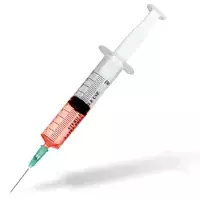Neutering pets has long been a common practice aimed at controlling overpopulation and mitigating certain behavioral issues. Traditionally, this procedure has involved invasive surgery, which not only places stress on the pet but often requires a significant recovery period. However, an innovative method called chemical neutering is emerging, sparking interest among pet owners and veterinarians concerned with animal welfare. This article delves into the implications of this new approach, the experiences of pet owners, and the potential impact on animal health and behavioral outcomes.
For many dog owners, the prospect of surgical neutering brings with it apprehensions about trauma and recovery time. The surgery involves the removal of a dog’s testicles, a procedure that, while routine, can be daunting for both pets and their owners. Stephanie Taylor, a pet owner from Shingle Springs, California, found herself in this exact situation. Originally planning to surgically neuter her 18-month-old Australian Shepherd, Gizmo, she discovered through social media a less invasive option: a chemical neutering procedure involving an injection of zinc gluconate solution, known as Zeuterin.
This method, unlike traditional surgery, promises a less invasive approach with a significant reduction in recovery time. The injection works by effectively sterilizing the dog within 30 days, eliminating sperm production while causing minimal disruption to the tissue in question. For many pet owners, the appeal lies in avoiding anesthesia and surgery altogether. Yet, despite its allure, the procedure does carry its own set of considerations and potential side effects.
Understanding the Procedure and Its Effects
The injection itself, administered with a fine needle, is designed to be as pain-free as possible, and many dogs do not require sedation. However, post-injection, some dogs, including Gizmo, may experience swelling or discomfort as the treatment takes effect. Taylor noted that while Gizmo experienced some distress immediately following the injection, he did not appear to be in severe pain.
The clinical implications of using Zeuterin are still unfolding. Research indicates that while complications are infrequent, improper administration could lead to undesirable outcomes such as tissue damage. The process necessitates that veterinarians be adequately trained—five hours of education on the specifics of administering Zeuterin is required to ensure safety and efficacy.
While the injection yields permanent sterilization, it is important to note that the physical appearance of the testicles does not change drastically; they may become firmer and smaller, but they remain visibly intact. This aspect may appeal to certain cultural perspectives and pet owner preferences, as some may prefer their dogs to look unaltered.
Notably, pet behavioral specialists highlight that neutering—whether surgical or chemical—can lead to significant changes in a dog’s demeanor. Following Gizmo’s treatment, Taylor reported a marked improvement in his behavior. He exhibited reduced aggression towards other dogs and nearly eliminated his urine marking tendencies. These outcomes suggest that chemical neutering may effectively address behavioral issues commonly associated with intact animals.
The prospect of integrating chemical neutering into standard practice presents an intriguing opportunity for pet owners who want a quick, efficient, and less traumatic method of controlling pet populations. According to Don Cowan from Ark Sciences, the company behind Zeuterin, an increasing number of dogs have undergone this procedure, which was recently approved by the FDA. As the medical community becomes more familiar with this method, it is anticipated that chemical neutering will gain traction in both low-cost clinics and standard veterinary practices.
While Zeuterin offers a promising alternative for male dogs, the conversation surrounding female sterilization remains more complex. Currently, no equivalent chemical method exists for female dogs, highlighting a significant gap in the availability of less invasive options. Existing studies concerning oral contraceptives in feral cats indicate that while there are potential alternatives, their effectiveness in pet populations has not been sufficiently established.
Looking to the Future
As pet owners continue to seek humane and effective solutions for their animals, the emergence of chemical neutering could signal a paradigm shift in veterinary practice. While traditional surgical methods are unlikely to disappear entirely, the promise of less invasive techniques like Zeuterin marks a progressive step towards improved pet welfare. For owners like Stephanie Taylor, the positive experience with Gizmo’s chemical neutering not only reshapes their approach to pet care but also sets the stage for broader acceptance of alternative methods in the veterinary community. The future of pet neutering is poised for change, and as new methods gain validation, both pets and their owners may enjoy a more compassionate approach to sterilization.

